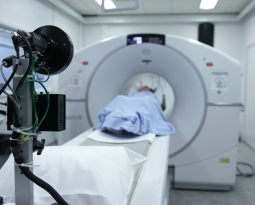Virginia Patent of the Month – October 2021
Electromagnetic acoustic transducers (EMATs) are devices capable of generating and detecting ultrasound in electrically conducting samples without the requirement for good acoustic contact, making them suitable for industrial applications where conditions are not conducive to the use of piezoelectric probes. EMAT pulsers are typically used for four standard power supply topologies including: capacitive discharge, H-bridge, half-bridge, and push-pull. With each of these methods, there are known disadvantages. The most notable disadvantage is that it only permits ringing the EMAT coil with half a cycle. This limits the amount of current that can be introduced and ultimately the strength of the ultrasonic ridges.
Innerspec Technologies, Inc. has developed a capacitive discharge push-pull converter pulser which tries to control the ringing of the coil. Their design uses a first electrical circuit connected to a DC voltage source. The voltage from the DC voltage source charges this capacitor. A second electrical circuit is set up in the same way. A differential electrical coil then couples these two electrical circuits. A low voltage driver provides a square pulse coinciding with the first half of one cycle. The frequency is set by a transistor. A second low voltage driver provides a square pulse which coincides with the second half of the cycle.
After a full cycle is completed, the coil current collapses in the differential electrical coil. Voltage is passed along through different resistors which dissipate the energy, clamping the voltage to ~1.5 volts. This effectively removes the ringing at the differential electrical coil. With this design, the number of cycles can be varied from 1 to 15 by altering the value of the capacitors. This better control increases the current available as well as the strength of the ultrasonic ridges.
Are you developing new technology for an existing application? Did you know your development work could be eligible for the R&D Tax Credit and you can receive up to 14% back on your expenses? Even if your development isn’t successful your work may still qualify for R&D credits (i.e. you don’t need to have a patent to qualify). To find out more, please contact a Swanson Reed R&D Specialist today or check out our free online eligibility test.
Who We Are:
Swanson Reed is one of the U.S.’ largest Specialist R&D tax advisory firms. We manage all facets of the R&D tax credit program, from claim preparation and audit compliance to claim disputes.
Swanson Reed regularly hosts free webinars and provides free IRS CE and CPE credits for CPAs. For more information please visit us at www.swansonreed.com/webinars or contact your usual Swanson Reed representative.

















